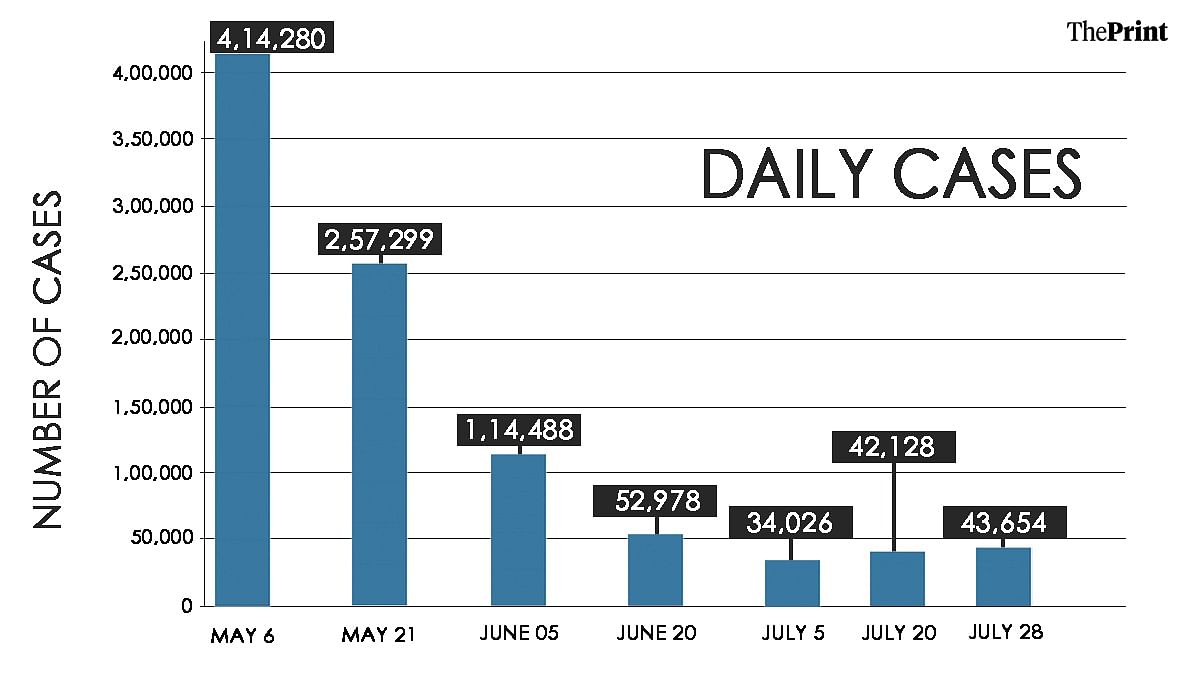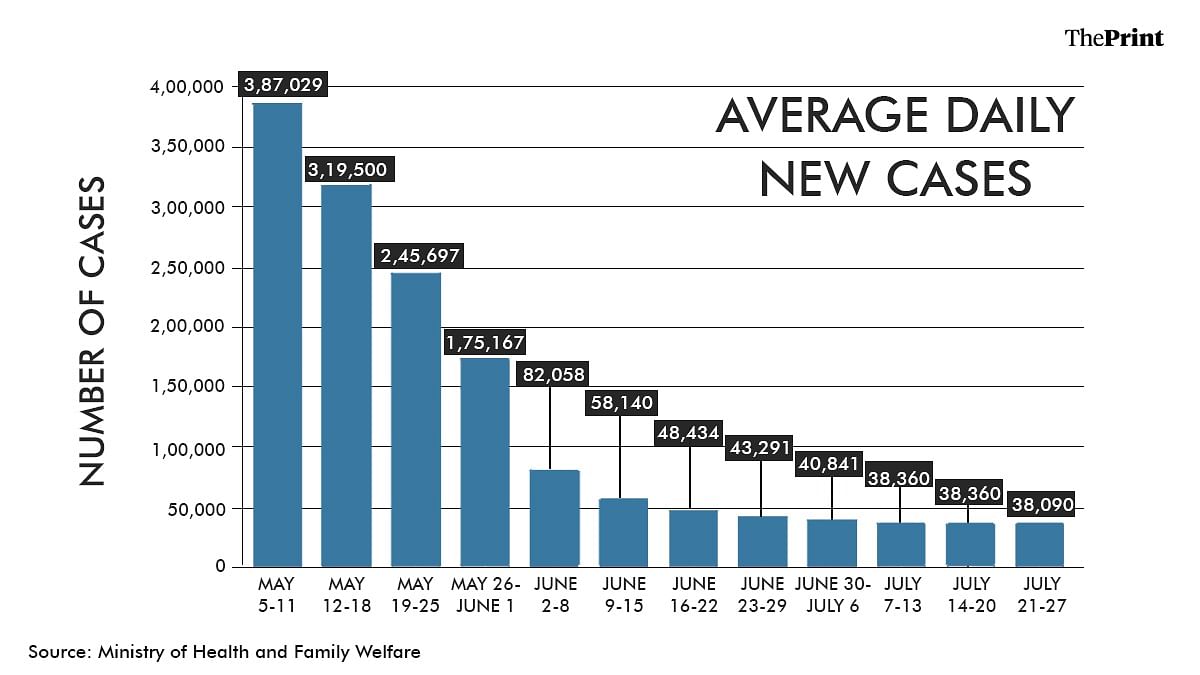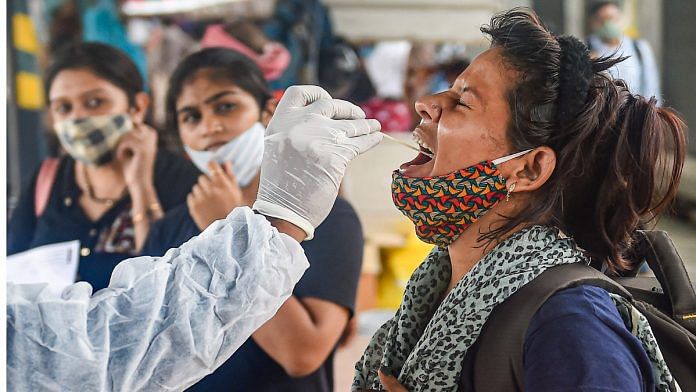New Delhi: It took India exactly 45 days for its daily Covid-19 case count to drop by nearly 90 per cent — from the second wave peak of 4,14,280 on 6 May to 42,683 cases on 21 June.
However, in the 37 days since, daily cases have plateaued in the 30,000-50,000 range (see graph). In fact, India Tuesday had reported less than 30,000 cases for the first time in 132 days but the number jumped by about 45 per cent Wednesday morning to 43,654 new cases.

While over 50 per cent of Wednesday’s tally came from Kerala — the state reported 22,129 cases — the plateauing is beginning to cause some furrowed brows in the Union health ministry.
“My worry is that cases are not coming down. Kerala of course has plateaued and they seem to have given up contact tracing altogether,” a senior health ministry official told ThePrint. “There is also the persistent problem of backlog deaths from Maharashtra. But the overall numbers nationally, even if they are localised, are not coming down the way they should.”
Seven of the 22 districts that have reported an increasing trend in cases in the last four weeks are in Kerala while two are in Maharashtra. All the rest are in the Northeast.
Also read: India’s Covid death rate likely to be 7-8 times higher than reported, study finds
Worrying numbers
While the daily numbers may now look like a fraction of the second wave peak, it is also a fact that for the longest time now, numbers have remained at about 50 per cent of the first wave high of over 97,000 cases on 17 September 2020.
The average daily cases for the 16-22 June week was 58,140. It came down to 40,841 per day average in the 7-13 July week and has since remained in the 38,000 plus range for the last three weeks (see graph).

The government has maintained that the second wave is not over yet — NITI Aayog member Dr V.K. Paul reiterated that Tuesday — but there are fears now of a third wave taking off from a second wave plateau.
In February 2021, cases had come down to about 9,000 per day before starting to rise again.
“Even by the recent serosurvey numbers, a large number of persons are still susceptible. Geographically too, there are parts of India that do not have (high) levels of seropositivity,” said Dr K.S. Reddy, president, Public Health Foundation of India. “Even those who test positive for antibodies may not all be fully protected from infection. The virus neutralisation capacity of antibodies has not been tested in the survey. This is particularly important against the variants in circulation.”
Reddy pointed out that the immunity conferred by vaccines is against severe infection.
“Mild infections can still occur. Case counts may plateau but hospitalisation numbers and death counts will continue to fall in such a case,” he added. “The society has widely opened up in many places. When many susceptible persons move freely in a society with modest levels of vaccination, plateauing can occur.”
Last week, the results of the fourth serosurvey showed that by the first week of June this year, 67.6 per cent Indians had antibodies against the SARS-CoV-2 virus.
Also read: Private sector filled the gap in health that govt created. Don’t ask for the moral price
Test positivity rate has remained above 2% all July
The test positivity rate, which is a measure of whether the testing is enough to truly detect the spread of the infection in the community, has also remained between 2.1-2.6 per cent in July. In June, it had come down from 5.4 per cent to 3.1 per cent.
“We are taking heart from the results of the serosurvey but two things have to be kept in mind. About 40 crore Indians are still vulnerable,” the health ministry official said. “Also, the virus is expected to mutate even further in the coming months and that could subvert immunity in people with prior infection. Even if, by some stroke of good luck it does not, by October, the antibodies will certainly start waning and that is when things may get really difficult.”
Experts have pointed out that speedy vaccinations may be the only option but there again, the limiting factor remains supplies. About 15 crore vaccine doses are expected in August, but the daily numbers will still be a far cry from the 1 crore “ideal”.
At present, 7.3 per cent of Indians are fully vaccinated and 26.2 per cent have received at least one dose. The target, according to the Government of India, is to cover every adult Indian with at least one dose of the vaccine by 31 December 2021.
(Edited by Arun Prashanth)
Also read: In 10 days, Health Minister Mansukh Mandaviya shows how he’s different from Harsh Vardhan



